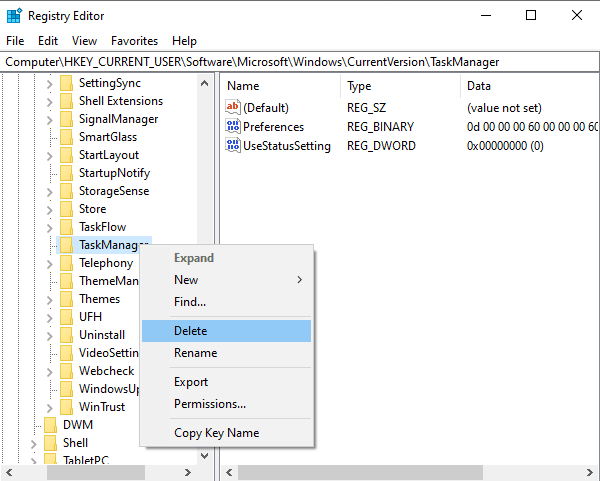

- Restore task manager process explorer pro#
- Restore task manager process explorer software#
- Restore task manager process explorer windows 8#
- Restore task manager process explorer series#
- Restore task manager process explorer windows#
The default Services app built into Windows (just type Services into your Start menu and you’ll find it) handles managing your services just fine. If you replace that version of Task Manager with Process Explorer, will you lose functionality? When it comes to services, no. They also now handle startup items and service management, which were located in MSConfig in earlier versions of Windows.
Restore task manager process explorer windows 8#
The Windows 8 and 10 versions of Task Manager don’t just manage processes. In Windows XP and earlier, that’s all you need to do-but in Windows 8 and 10, there’s a twist. Select that, and every action that would normally have triggered Task Manager, whether you invoke it from the command prompt or select it from the Ctrl+Alt+Delete menu, launches Process Explorer instead. In the Options menu, you’ll see an item labelled Replace Task Manager. Process Explorer can help you out with that. Once you get comfortable with it, you’ll discover that Process Explorer is better at managing tasks than Task Manager in almost every way, and you’ll never want to open Task Manager again. Nevertheless, Process Explorer’s VirusTotal integration is a very good start. Also, viruses may be too new to have been widely flagged, or they could be deploying any number of anti-antimalware techniques. For example, Process Explorer itself is occasionally flagged as hazardous. Obviously, like any other antivirus measure, this isn’t foolproof, and you can get false positives. For more information, just click the numbers to open the VirusTotal website, where you can learn more. The higher the number, the more likely it is that the process is actually malware. For example, “7/59” means that 7 out of 59 total antivirus providers think that the process is potentially hazardous. This column shows the number of antivirus services that have flagged that particular process as a potential virus. Otherwise, it adds a VirusTotal column to Process Explorer. (The same path’s also available via the right-click menu.) If this is the very first time you’ve scanned a process, it will take you to the VirusTotal Terms of Service. Process Explorer uses VirusTotal, a Google project that checks questionable processes against the databases of all the major antivirus companies.įirst, click the suspicious process, then go to Options > Check.
Restore task manager process explorer pro#
But you don’t need to be a malware-busting pro like Russinovich to figure out whether a suspicious-looking process is a virus.
Restore task manager process explorer series#
For some really in-depth examples, you can always check out Mark Russinovich’s world-class “The Case Of…” series of blog posts and videos. Process Explorer is especially useful if you’re hunting malware. Just type your filename, and it’ll tell you which process is locking that file. There’s a lot more information here-the scrolling line charts at the top of the window, the color codes, the lower pane showing DLLs and handles-but for now let’s focus on the process list.īut what if you don’t know which process is holding your file hostage? Are you supposed to go through every process in the list hunting for your file? You could, but there’s a much easier way: Click Find > Find Handle or DLL, or use the Ctrl+F keyboard shortcut. This list is constantly updating, but if you want to freeze it in time-say, to examine a process that appears and disappears quicker than you can click on it-you can hit the space bar to pause the updates. If you’d prefer an alphabetical listing instead, just click the “process name” column heading. The processes are presented hierarchically, which means if a process spawns another process, the child process will be listed nested underneath the parent. (3) Now, when you kill the csrss. (2) open powerful alternative task manager like 'Process Explorer'.
Restore task manager process explorer software#
(Pro tip: Micronsoft is not a legitimate software manufacturer.) You can customize your columns to include more or less information by right-clicking on the column heading, just like any other program with sortable columns. To get rid of malicious csrss.exe, (1) search for all files csrss.exe on your computer. It lists the process name, the process description, CPU and memory usage, and the company name of the software’s creator-something that’s very useful when you’re malware hunting. This shouldn’t be completely unfamiliar if you’ve used the Details tab in Task Manager (aka the Processes tab in Windows XP and earlier). In the top half of the main window, you’ll see a list of processes.


 0 kommentar(er)
0 kommentar(er)
